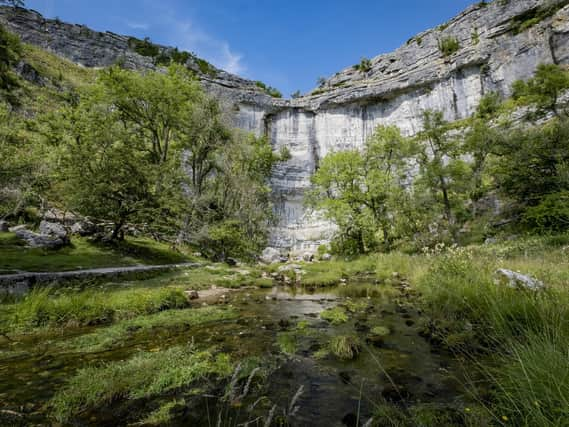Picture Post: Magnificent Malham Cove has been amazing visitors for centuries


The cove famously features in Harry Potter and the Deathly Hallows (Part 1), as well as an episode of Steve Coogan and Rob Brydon’s much-loved comedy The Trip.
The location was also used in the 1992 film Emily Brontë’s Wuthering Heights, which starred Juliette Binoche and Ralph Fiennes.
Advertisement
Hide AdAdvertisement
Hide AdAs the Yorkshire Dales National Park website explains, Malham Cove has gradually evolved over a period of millennia to create the dramatic cliff that exists today.
It says: “The 70 metre (230ft) high, gently curving cliff of white limestone has amazed visitors for centuries. Formed along the line of the Middle Craven Fault, it has been eroded backwards from the line of the fault by the action of water and ice over millions of years.
“Over the last one and a half million years, Malham was probably covered at least three times with huge sheets of ice. As these glaciers ground their way over the landscape they plucked rock from the face of the Cove and carried it away.
“Each time the glaciers melted, huge floods of water further eroded the face of the Cove. The water flows underground now, but then, the ground was permanently frozen and so the glacial meltwater had to run over the top. The result was that a massive waterfall once thundered over the Cove.
Advertisement
Hide AdAdvertisement
Hide Ad“Today, the sheer rock face of Malham Cove challenges climbers and also protects a pair of nesting peregrine falcons which can be viewed during the summer months diving and wheeling alongside the house martins and jackdaws that also call the Cove home.”
A summary of the enduring appeal of Malham Cove was given by 18th Century priest and antiquary Thomas West in 1779. He said: “This beautiful rock is like the age-tinted wall of a prodigious castle; the stone is very white, and from the ledges hang various shrubs and vegetables.”
Technical information: Fujifilm X-T3 camera, 1/125th of a second at f10, ISO 200.
Support The Yorkshire Post and become a subscriber today. Your subscription will help us to continue to bring quality news to the people of Yorkshire. In return, you'll see fewer ads on site, get free access to our app and receive exclusive members-only offers. Click here to subscribe.